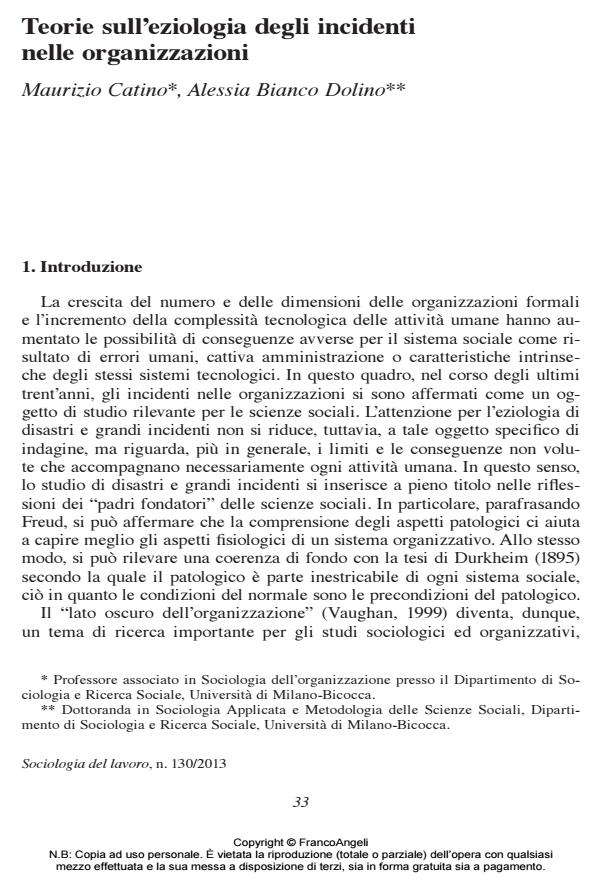Teorie sull’eziologia degli incidenti nelle organizzazioni
Titolo Rivista SOCIOLOGIA DEL LAVORO
Autori/Curatori Maurizio Catino, Dolino Alessia Bianco
Anno di pubblicazione 2013 Fascicolo 2013/130
Lingua Italiano Numero pagine 19 P. 33-51 Dimensione file 639 KB
DOI 10.3280/SL2013-130003
Il DOI è il codice a barre della proprietà intellettuale: per saperne di più
clicca qui
Qui sotto puoi vedere in anteprima la prima pagina di questo articolo.
Se questo articolo ti interessa, lo puoi acquistare (e scaricare in formato pdf) seguendo le facili indicazioni per acquistare il download credit. Acquista Download Credits per scaricare questo Articolo in formato PDF

FrancoAngeli è membro della Publishers International Linking Association, Inc (PILA)associazione indipendente e non profit per facilitare (attraverso i servizi tecnologici implementati da CrossRef.org) l’accesso degli studiosi ai contenuti digitali nelle pubblicazioni professionali e scientifiche
Questo articolo presenta i diversi contributi teorici che hanno caratterizzato l’eziologia degli incidenti organizzativi: (1) la teoria degli incidenti normali, causati dalle caratteristiche strutturali di alcune organizzazioni; (2) la teoria degli incidenti organizzativi, causati dalla presenza di fattori patogeni di natura organizzativa che favoriscono gli errori e le azioni insicure degli operatori; (3) la teoria degli incidenti epistemici, causati da assunzioni scientifiche e tecnologiche dimostratesi errate, anche se ritenute ragionevoli fino al manifestarsi dell’incidente. Dopo aver presentato le caratteristiche principali delle diverse teorie, l’articolo propone una comparazione analitica tra i diversi approcci individuandone le relative implicazioni per la teoria e per la pratica. In conclusione viene presentato un modello analitico multilivello (micro, meso, macro) per lo studio degli incidenti organizzativi e il miglioramento delle condizioni di sicurezza.
Parole chiave:Incidente organizzativo, incidente normale, incidente epistemico, errore umano, sicurezza, affidabilità organizzativa
Maurizio Catino, Dolino Alessia Bianco, Teorie sull’eziologia degli incidenti nelle organizzazioni in "SOCIOLOGIA DEL LAVORO " 130/2013, pp 33-51, DOI: 10.3280/SL2013-130003